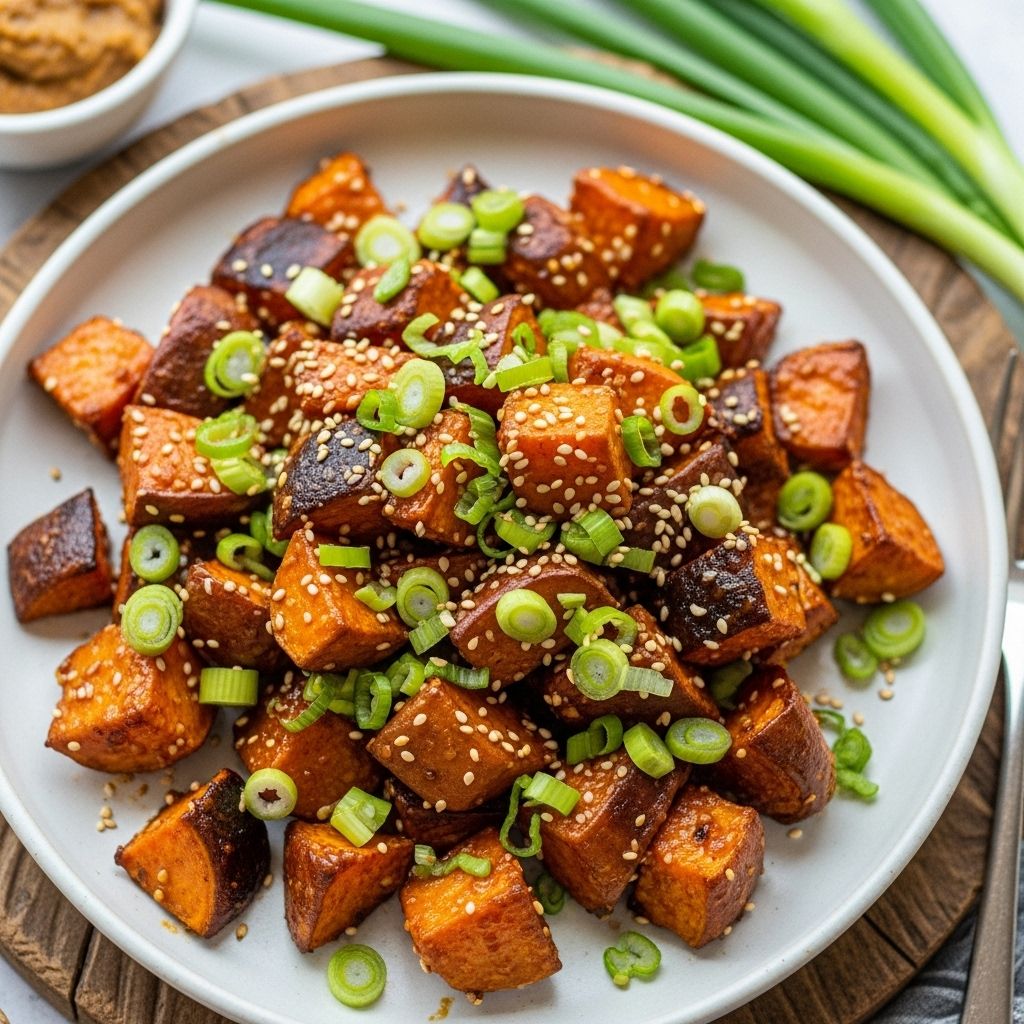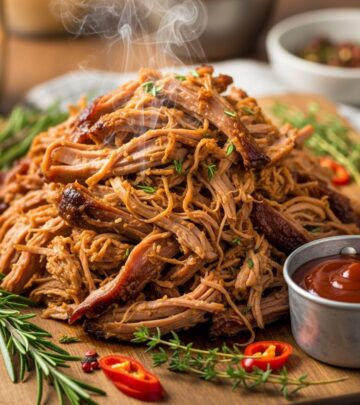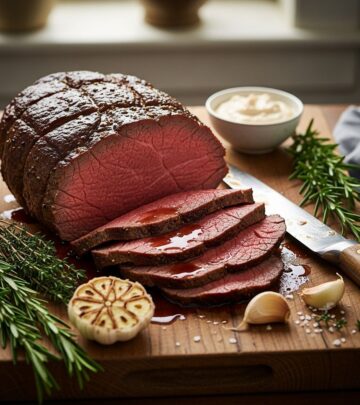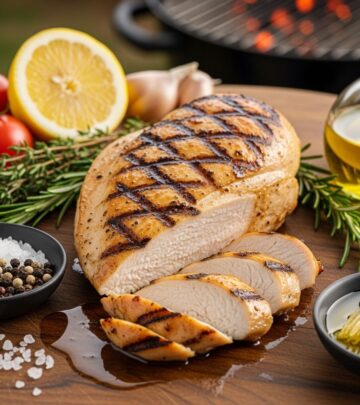Miso-Scallion Roasted Sweet Potatoes: A Fusion of Savory and Sweet
A luscious umami glaze elevates an everyday side into a crave-worthy gourmet creation.

If you crave the comfort of roasted vegetables but seek something with real depth, miso-scallion roasted sweet potatoes will transform your side dish repertoire. This recipe leverages the natural sweetness of sweet potatoes, elevating it with a lush miso glaze and the aromatic freshness of scallions to create a dish that’s both simple and sublime.
Why Miso and Scallions with Sweet Potatoes?
Combining miso and scallions with roasted sweet potatoes creates a harmony between sweet, salty, earthy, and aromatic flavors. Each element has its own contribution:
- Sweet potatoes: Naturally sweet and starchy, offering a creamy texture when roasted.
- Miso: A fermented soybean paste, rich in umami and savory complexity, brings a deeply satisfying edge to the glaze.
- Scallions: Also called green onions, these provide bright, aromatic notes that cut through the richness and enhance the overall flavor profile.
This pairing is greater than the sum of its parts, making for an elegant but accessible side or even a vegetarian main course.
Understanding Miso: Flavor, Types, and Uses
Miso is an essential ingredient in Japanese cuisine, known for its umami-rich, salty, and slightly sweet qualities. Traditionally made from fermented soybeans, rice or barley, salt, and water, miso ferments over months or even years, resulting in a depth of flavor that both seasons and enriches dishes.
- White Miso (Shiro): Milder and sweeter, ideal for subtle applications and lighter glazes.
- Red Miso (Aka): Stronger, saltier, and deeper in flavor, best used sparingly for robust dishes.
- Mixed Miso (Awase): A blend of white and red miso for balanced complexity.
For this recipe, white or mixed miso is preferred for balance, but you can experiment based on available pantry staples. Remember that miso is salty—adjust the amount to taste and temper it according to the type used.
Recipe Overview: Miso-Scallion Roasted Sweet Potatoes
This recipe brings together a handful of ingredients in a method that emphasizes texture and flavor. The process involves roasting sweet potatoes until tender, preparing a savory-sweet miso-scallion glaze, and finishing the potatoes under the broiler for an irresistible caramelized crust.
Key Ingredients
- Sweet potatoes (preferably large and evenly sized)
- Miso paste (white, red, or mixed)
- Scallions, finely chopped
- Butter or coconut oil (for a vegan alternative)
- Garlic (optional, for extra aromatic depth)
- Fresh ginger (optional, for zing)
Step-by-Step Directions
- Roasting the Sweet Potatoes
- Preheat the oven to 400°F (204°C).
- Wash sweet potatoes thoroughly, then pierce each several times with a fork.
- Place the potatoes on a foil-lined baking sheet or wrap each in aluminum foil individually for softer skins. Roast for 40–60 minutes, or until fork-tender.
To master the art of roasting, check out our perfect side dish recipe for oven-roasted sweet potatoes. This guide reveals tips and techniques to achieve that impeccable texture and flavor every time you roast, leaving your guests in awe. - Preparing the Miso-Scallion Mixture
- In a medium skillet over low-medium heat, melt butter or coconut oil.
- Add finely chopped scallions (reserve a teaspoon for garnish), and cook until fragrant and soft, about 2–3 minutes.
- Add minced garlic and ginger, sauté for another 1–2 minutes until fragrant.
- In a small bowl, blend miso with a bit of hot water to form a loose paste.
- Add the miso paste to the skillet, whisking until thickened and slightly caramelized, 2–3 minutes more.
- Finishing and Serving
- Once the sweet potatoes are done and cool enough to handle, halve them lengthwise.
- Use a fork to gently loosen or fluff the flesh, creating space for the glaze to penetrate.
- Spoon or spread the miso-scallion glaze generously over the exposed surface of each potato half.
- For a crisp top, place the glazed potatoes under the oven broiler for 3–5 minutes, watching closely to avoid burning—just until the topping caramelizes.
- Garnish with reserved sliced scallions and serve hot, either as a side or a vegetarian main.
Tips for Success: Variations and Make-Ahead Strategies
- Potato Selection: Japanese sweet potatoes (Satsuma Imo) have a starchier, firmer texture and a more subtle sweetness than common orange varieties. Both work beautifully; try both to compare!
- Miso Type Adjustment: If using red or mixed miso, reduce the quantity slightly to balance salt and intensity. For white miso, a little extra can enhance the mellow sweetness.
- Vegan Adaptation: Replace butter with coconut oil or a vegan butter alternative.
- Flavor Expanders: Add a touch of maple syrup to the miso glaze for enhanced sweetness, or include sesame oil for toasted depth.
- Batch Cooking: Leftover miso-roasted sweet potatoes make excellent next-day lunches, or can be cubed and tossed into salads.
Serving Suggestions
- Serve alongside roasted meats, grilled fish, or as a standalone vegetarian main.
- Use as a base for grain bowls with sautéed greens, legumes, and a tangy dressing.
- Stuff into tacos or wraps with pickled vegetables for a fusion-inspired handheld meal.
Nutritional and Culinary Notes
Sweet potatoes are rich in dietary fiber, vitamins A and C, potassium, and antioxidants. Miso contributes small amounts of protein, B vitamins, and probiotics if unpasteurized.
Culinary balance: The interplay of sweet, salty, and umami—accented by aromatic scallion—is what makes this dish shine. By controlling the level of saltiness and sweetness, you can tailor it to your dietary needs and palate.
Storing and Reheating
- Store leftovers in an airtight container in the refrigerator for up to 3 days.
- Reheat in a toaster oven, conventional oven, or microwave until warmed through. If possible, use the broiler for a couple of minutes to refresh the crispy topping.
Frequently Asked Questions (FAQs)
Can I prepare the miso-scallion mixture ahead of time?
Yes, the miso-scallion mixture can be made up to 3 days in advance and stored in an airtight container in the refrigerator. Warm gently before using so it’s easy to spread.
What kind of miso works best?
White (shiro) miso is ideal for its mild sweetness, but you can use red (aka) or mixed (awase) miso for a deeper, saltier flavor—just use a bit less to offset the saltiness.
Can this recipe be made vegan?
Absolutely. Substitute butter with coconut oil or your preferred vegan butter. The miso and scallions supply bold flavors regardless of the fat used.
Are there alternatives to sweet potatoes?
You can use regular potatoes (such as Yukon Gold or russet), Japanese yams, or even squash. Adjust cooking time as needed.
How do I prevent the topping from burning under the broiler?
Watch closely, as the miso paste can scorch quickly. Keep the broiling time short (2–5 minutes), and place the potatoes on the middle rack if your broiler runs hot.
Table: Ingredient Substitutions and Variations
| Original Ingredient | Possible Substitutions | Effect on Flavor/Texture |
|---|---|---|
| Miso paste | White, red, or mixed; soy-free chickpea miso | Changes depth and saltiness; chickpea is less intense |
| Butter | Coconut oil, vegan butter | Vegan and adds subtle tropical note |
| Scallions | Chives, leeks, shallots, green garlic | Different aromatic notes, all complement miso |
| Sweet potatoes | Japanese sweet potatoes, regular potatoes, squash | Alters sweetness, texture, and color |
Advanced Tips and Flavor Pairings
- Try adding toasted sesame seeds over the finished dish for crunch and nutty flavor.
- Incorporate citrus zest (like orange or yuzu) for a bright, aromatic lift.
- Serve with a drizzle of chili oil if you love a spicy, smoky finish.
- Pair with other Japanese-inspired dishes like miso soup, teriyaki tofu, or pickled vegetables for a complete meal.
Conclusion: Bringing It All Together
Miso-scallion roasted sweet potatoes are more than just a side—they’re a celebration of simple ingredients amplified by thoughtful technique and clever seasoning. By understanding the balance of flavors and applying a few key tips, you can create restaurant-quality vegetables in your own kitchen. Whether you’re serving family dinner or a holiday feast, this dish promises to surprise and satisfy.
References
Read full bio of medha deb












